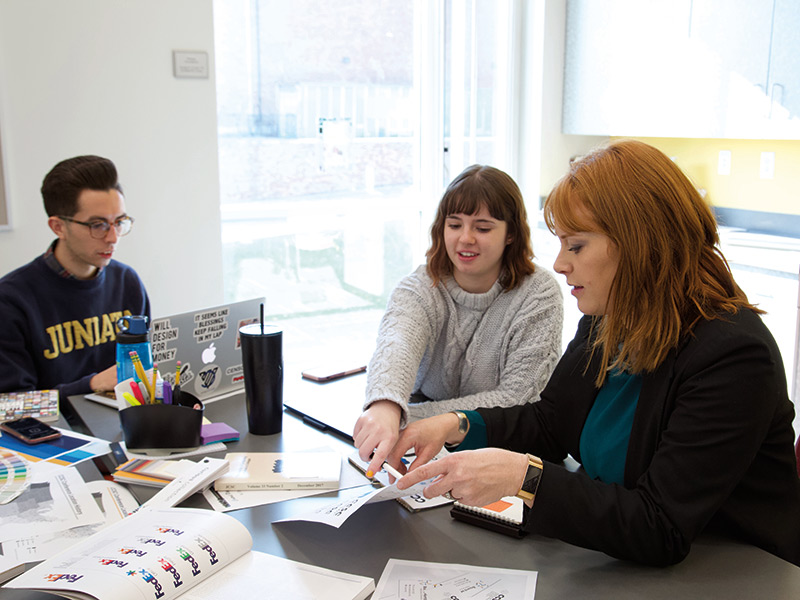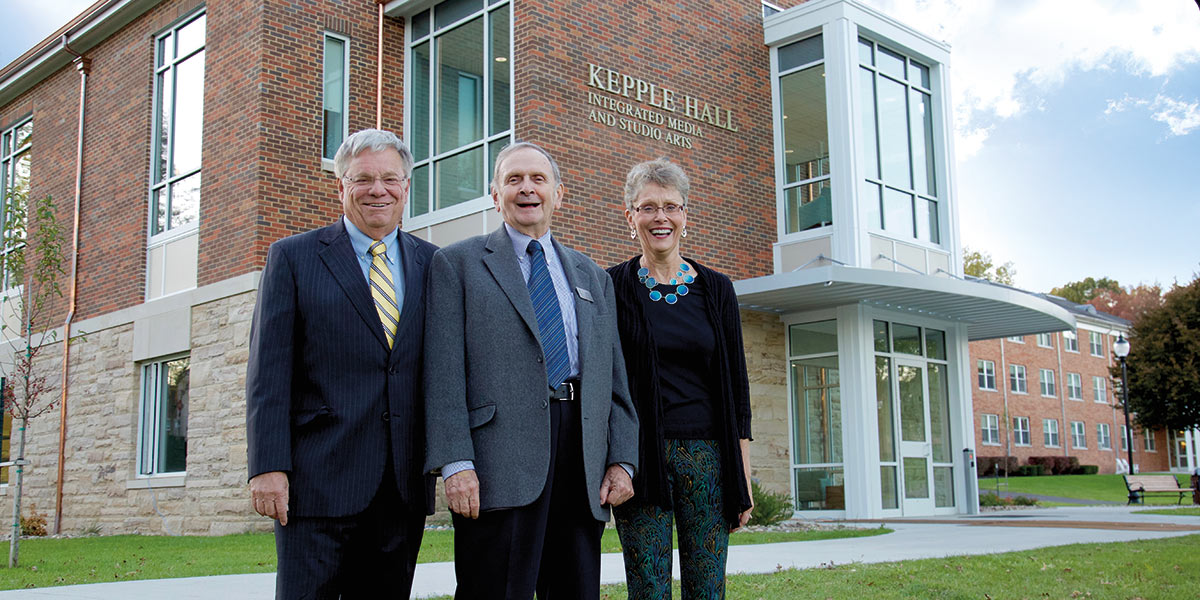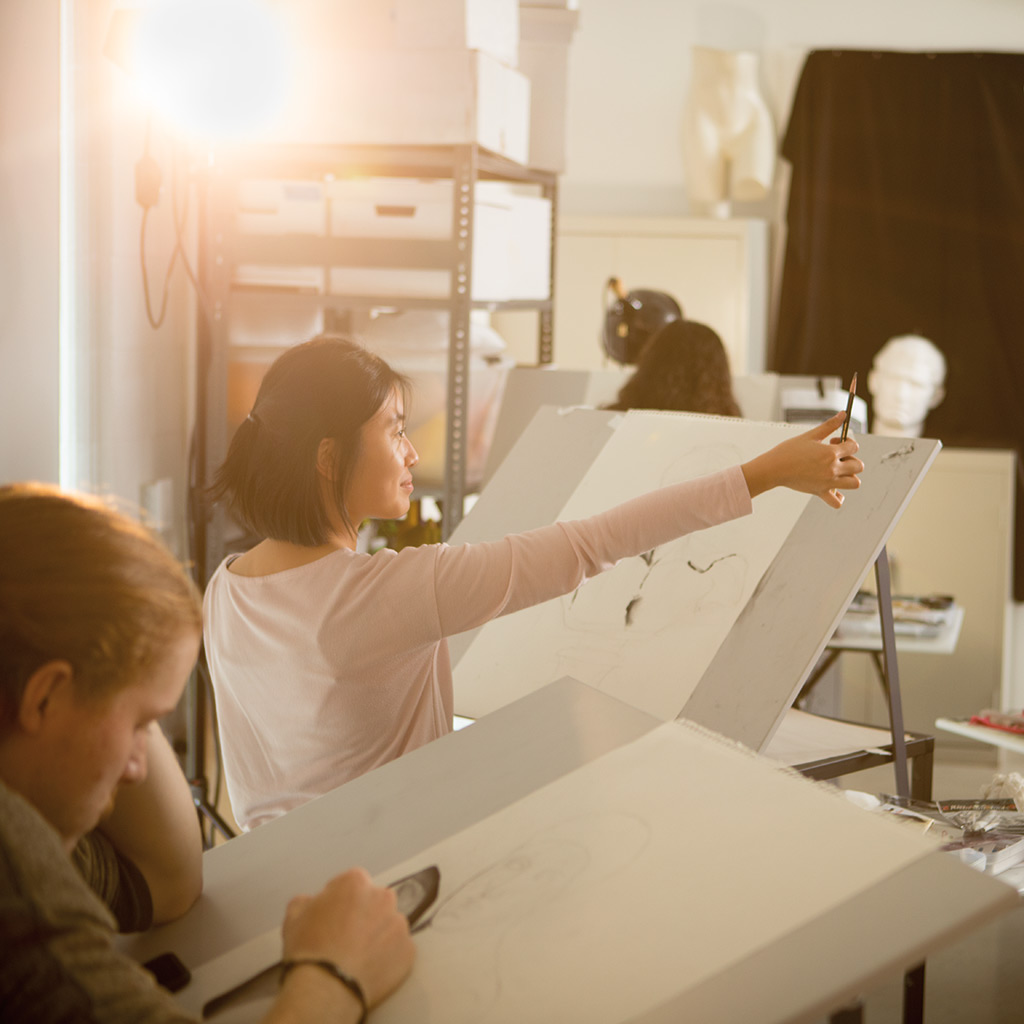Through a $3.2 million donation during the early phase of the BELIEVE Campaign, John Dale ’54 of Moorestown, NJ, and his late wife, Irene Miller Dale ’58, saw an opportunity not only to fulfill a goal of the College’s master plan but to honor the contributions of Juniata College president emeritus Tom Kepple, who served in the position from 1998 to 2013, and his wife, Pat.
Kepple Hall was dedicated in October 2017, and the name of the two-story building was announced to the surprise of its namesakes.
“It makes a big difference for our students. It makes a big difference for our faculty, which makes a big difference in the value proposition of our college,” Former chair of Juniata’s Board of Trustees Tim Statton ’72 says. “Irene and John were a big part of what I like to call ‘the great Kepple years.’ In showing respect to those years, they have named the building for Pat and Tom.”

At the dedication ceremony, the Kepples expressed their gratitude for the honor.
“(John) was determined to get this building done. Determined in a way that made this building possible. We wouldn’t be here today without his plan,” Tom Kepple says. “(The Dales) have been so instrumental, not just in this building, but to Juniata and the Kepple presidency, and I want to say thank you.”
“Not only was it a surprise that you put Tom’s name on the building, I was stunned that you put me on there too,” says Pat Kepple. “You didn’t have to add my name, but you did. I don’t even have the words to explain to you what that means to me.”
The Dales have been significant donors to the College since the mid-1990s, when John retired from a telecommunications firm called Dale, Gesek, McWilliams & Sheridan, co-founded in 1970 with colleague Rex McWilliams. The company, which was bought out by Comverse Inc. in 1995, developed telephone technologies that are still used in call forwarding, voice storage, and caller ID applications.
The Dales’ interest in funding the arts building came about in 2000, when John, then serving on Juniata’s Board of Trustees, was asked to be a representative from the board for a program review of the art department.
When conversations regarding the funding and future construction of the building began in earnest in 2013, John had three requests — that the facility be completed in his lifetime, that the design incorporates stone from Roaring Run Quarry (a business once owned by his father during the Depression), and that he and Irene retain naming rights of the new structure.
Through the Dales’ support of the arts and creative expression in the teaching and learning environment, Kepple Hall cultivates an atmosphere of inspiration. Students are challenged to develop ideas to solve problems in a space designed and equipped for learning traditional and digital arts.
“I cannot imagine my Juniata experience without Kepple Hall. That place has a special place in my heart — memories of spending some really great late-nights with friends finishing up our projects,” says Rohan Bandekar ’22. “Having a dedicated space for integrated media arts (IMA) allows the students in the field to belong to a tight-knit community. Kepple offers a space for IMA students, content creators, and artists alike to meet with one another, share ideas, and collaborate on projects together.”

The addition of Kepple Hall has benefitted the entire community.
“We have thoroughly enjoyed our new home for the last few years,” said Ryan Gibboney, assistant professor of integrated media arts. “Now in our fifth academic year in Kepple Hall, I am excited and eager to make the most of our interdisciplinary spaces and continue to teach in our beautiful building.”
John and Irene have been great friends to Juniata through the years. Their philanthropy has reached across campus and changed the Juniata experience for generations of students. In addition to their gift for Kepple Hall, John and Irene donated more than $6 million to expand the college’s technology curriculum into information technology. They contributed funds to renovate the “C” wing of the Brumbaugh Academic Center to house faculty and classrooms for the business, IT, communication, and math departments into what is now a collaborative space known as Dale Hall. The Dales made gifts for the revitalization of Juniata’s “First Building,” Founders Hall and provided support for the Juniata Scholarship Fund each year.
“People say they are thankful that we have done this,” says John. “I’m very glad to be in a position to be able to do it.”






